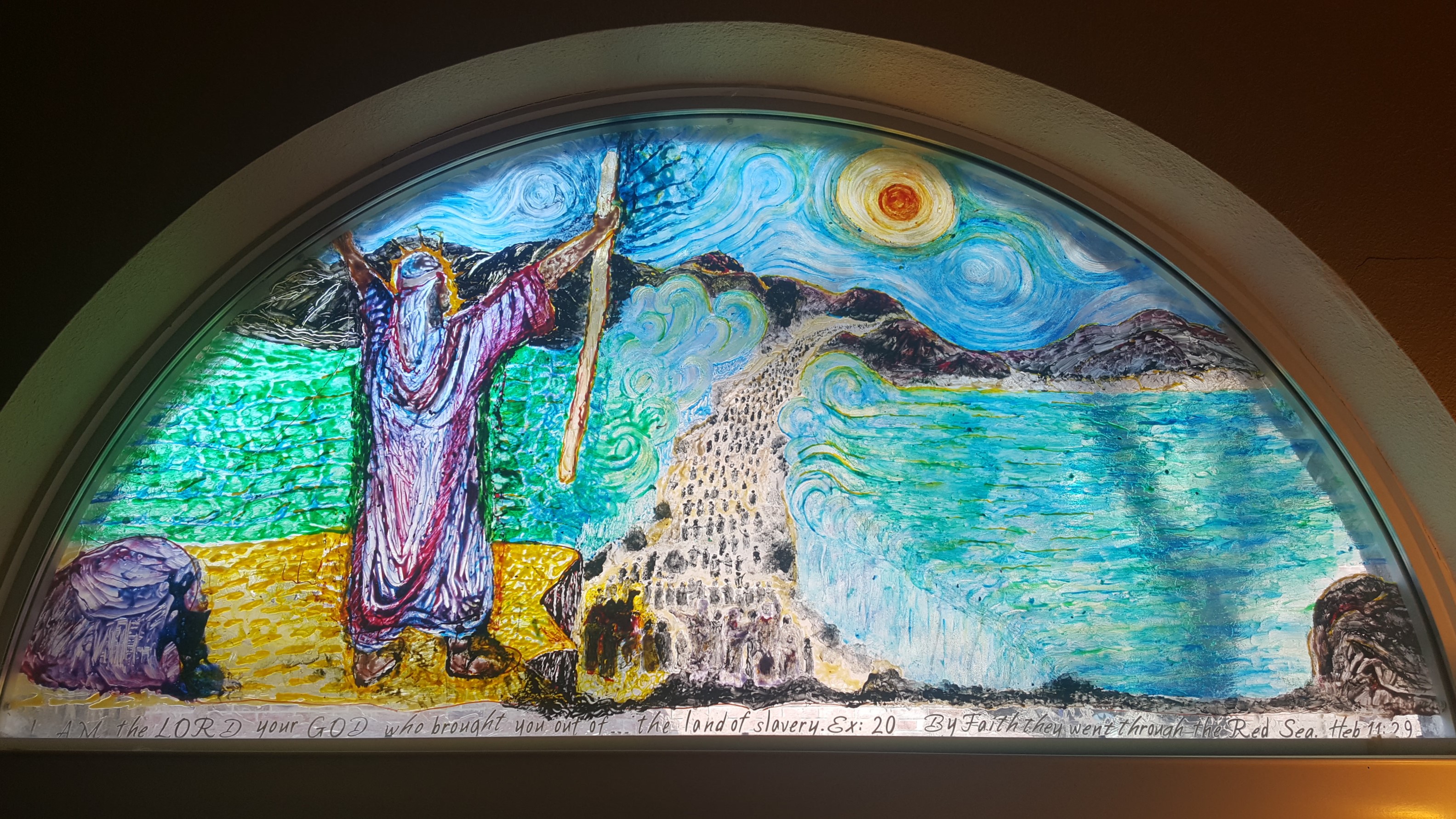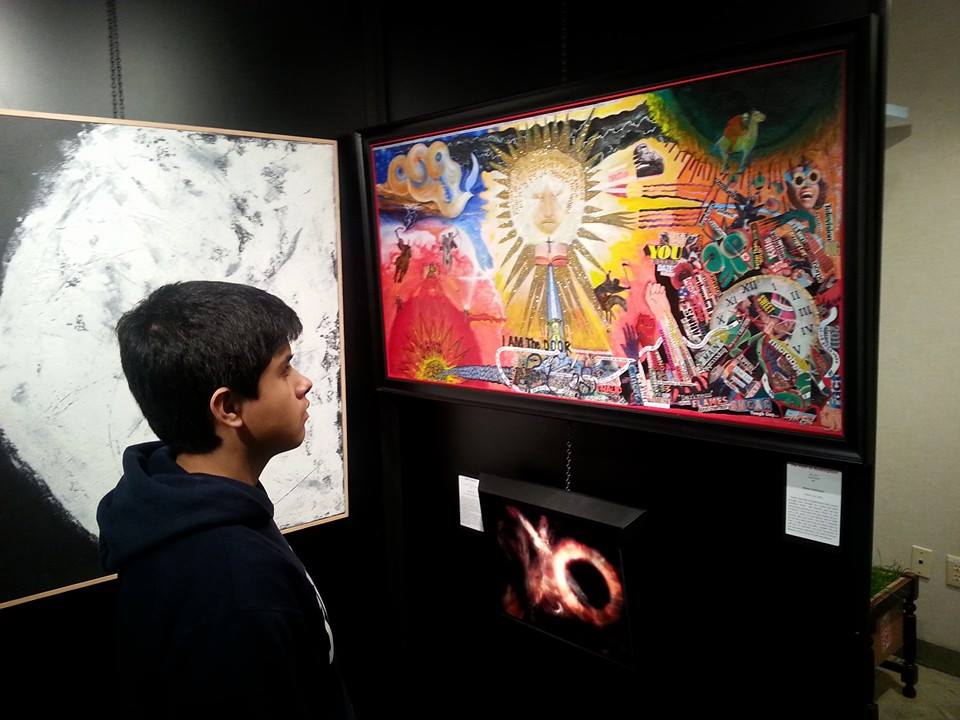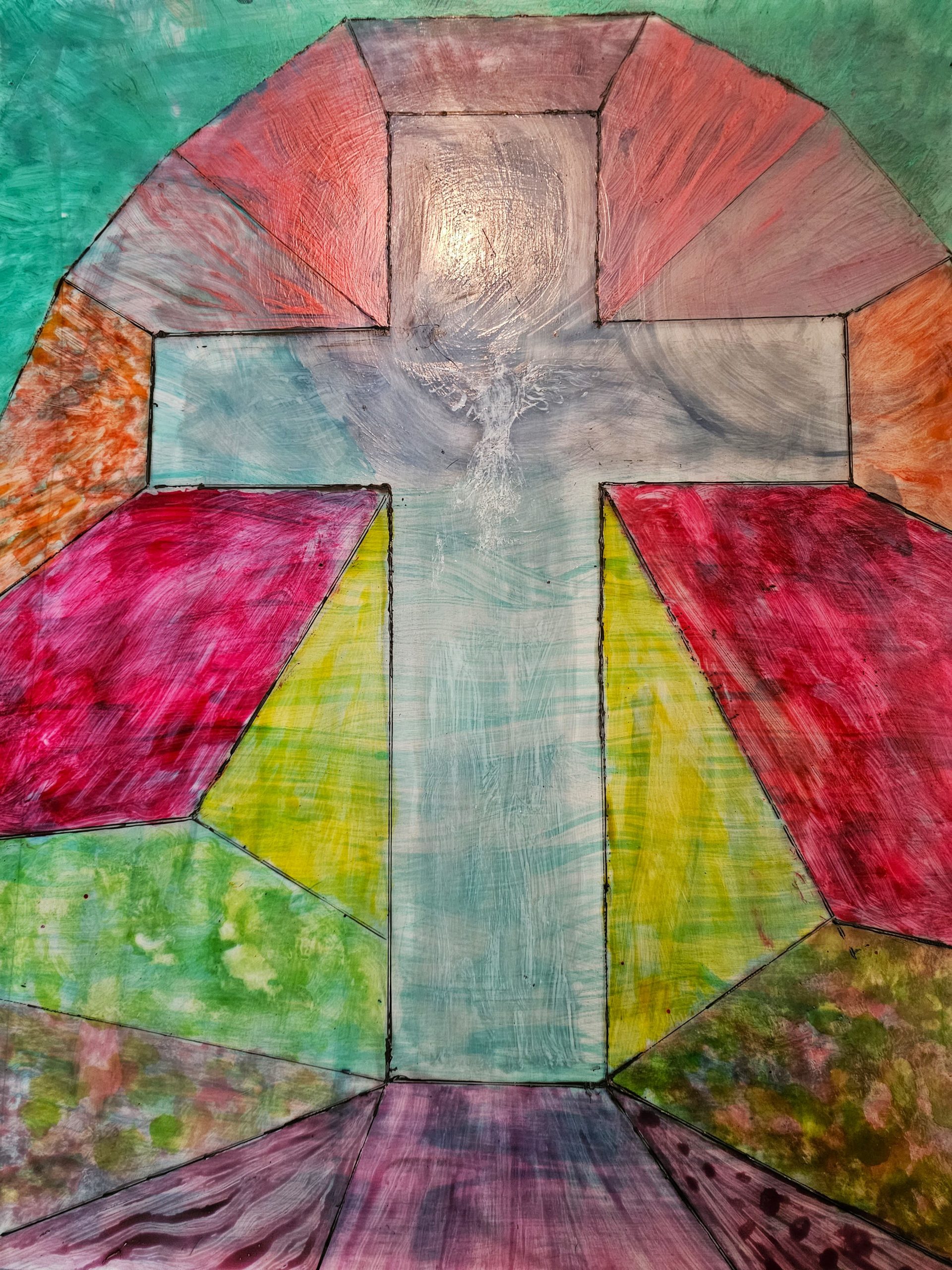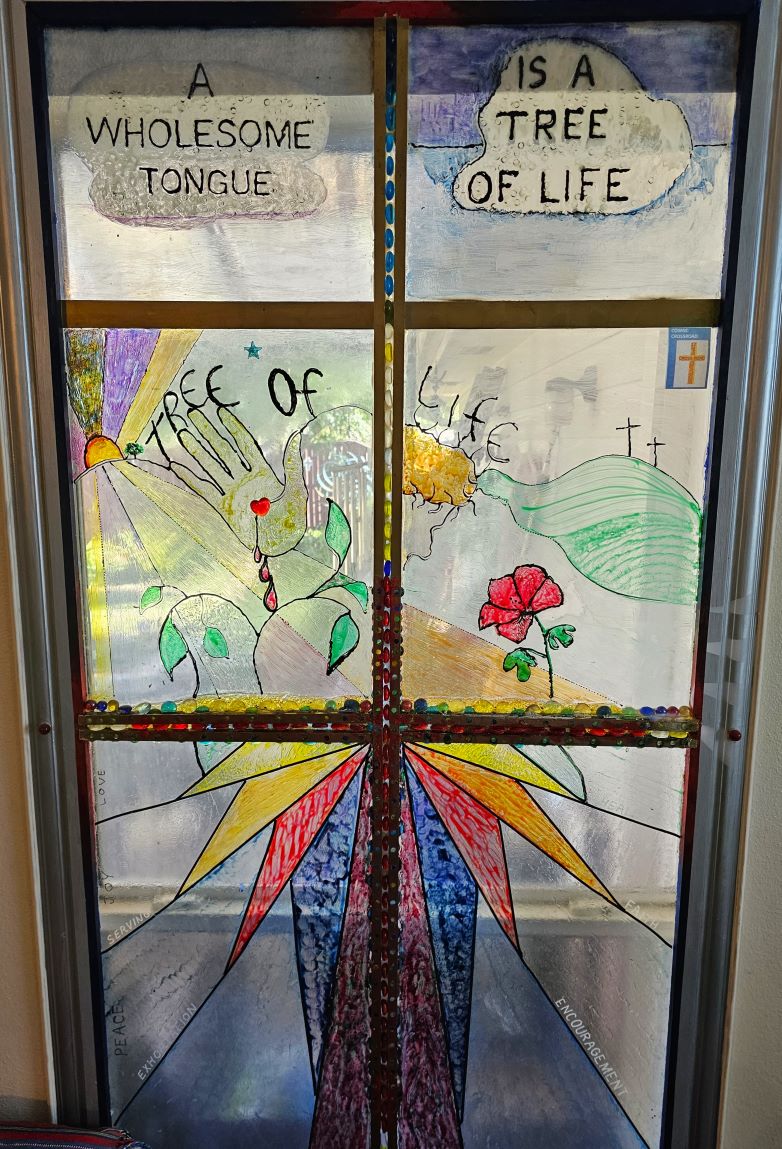The first example I want to show you is a traditional stained glass with lead window that I made from scrap glass. I did not have enough yellow of the same type so I used multiple “yellows.” Note how good of an effect it has. Often you do not want conformity—- it is better to have surprise divergence of color, shadow, and form that will draw the eye. This window is about 4 ft. by 2 ft. and yes that is real glass with an embedded “sand dollar.” It also has a couple of glass stars. The only “bought glass” is in the rainbow and some of the water.

The work above is a 5 ft. by 3.5 ft. “Stained Glass-Paint” artwork on Polycarbonate that has been hanging for 3 years in direct Eastside sun and it has not faded. Polycarbonate is known to eventually yellow over time but may not when covered with this “stained glass paint.” Large pieces like this need to be reinforced but smaller pieces do not. This piece has intense color and shading due to the layering technique.
It is titled Moses and the Miracle of the Red Sea Crossing
The experimental art below is done on canvas and can be found in other Art posts that are on this site. Some have won awards.

Below is the largest piece which is 8ft. by 4 ft. and is a mixed media piece with lights on the frame. It shows Isaiah 60:1-2 as the Son rises upon the darkness and rebellion on the earth. God the father is seen seeding the earth and the Holy Spirit is coming to the rescue as the 4 Horsemen of the Apocalypse are released. But the prayer of the saints and the Word are active to defeat darkness. This next piece is my most recent “stained glass” work and is simple enough for anyone to do in class:

This Cross is a simple yet complex looking stained “glass” painting designed to cover an outdoor window in order to control the heat from the intense sun. This uses some of the techniques that I discovered years ago when I gave up on that Moses stained painting that looked too strained or lacking in flow—- then a year later I scrapped the paint off discovering an amazing new concept of reusing old paint.
This type of “stained window” is effective in cutting down the UV rays and heat from direct sunlight on any window. Like the 3.5 by 5 ft. window illustrating Moses and the parting of the Red Sea it allows light in but decreases heat. As I said the technique is unique, and I will teach anyone. The material cost in doing this big 3ft by 2 ft cross is about $90 ($41 for Lexan on amazon) and $35 for paints and shipping depending the size of the bottles of paint you want to invest in. This window uses about 5 colors. I am looking for ideas to do live Zoom online to teach or will teach a class at the Richardson Senior Center. We will probably use 1 ft. by 1 ft. panes of the polycarbonate or a 1 ft. by 1ft. X 18 in Lexan. The Lexan is bigger and more expensive.
Below is a series of “stained paintings” that fit a very untilitarian purpose: to allow the person inside the house to see out yet prevents the outsider from seeing in—yet is a creative artistic decoration for the entry. This goes behind the normal glass and is held together with Home Depot type glass framework insulator material.
Contact me at phrescue777@gmail.com. And below is another effect caused by light showing through this Art-Light painting: this is the same Cross painting that was illustrated earlier. Once mounted on an outside window, it gives a different perspective…..and what looked like an angel before in the center of the cross is actually a flying dove. We can see the effect of brush strokes which can be painted over to create an entirely different effect. Because of the refracted light you have a 3-D effect at the base of the cross…..generating a translucency that allows you to see out. If you do not want this much translucency you can “paint” another layer.
The Window below is a large 29 inch by 79 inch door-window using the same technique. This was the first of the windows done. It illustrates Jesus on the Cross with two other crosses in the background. The Rose of Sharon is a symbol of the blood shed for our sins. Here you can see how using special “brush strokes and brush blotching” can create a unique artistic effect. This large window replaces the need for a curtain and acts to cut down on light streaming in.
I have found that stained glass paintings act as great “inbetween room windows” such as in an office— so that one can see someone entering a reception area yet they cannot see you. It can replace an aquarium and I have done led based stained glass art for this type of inter-room window.



